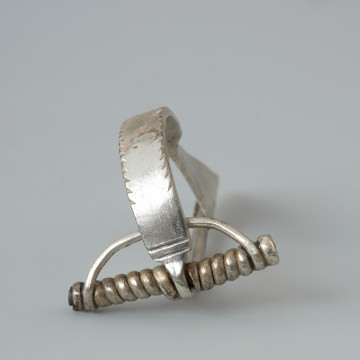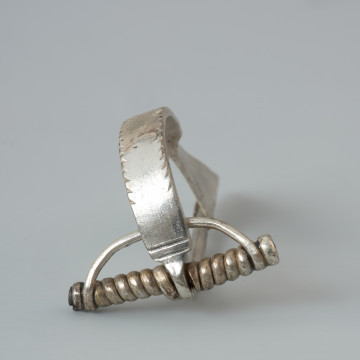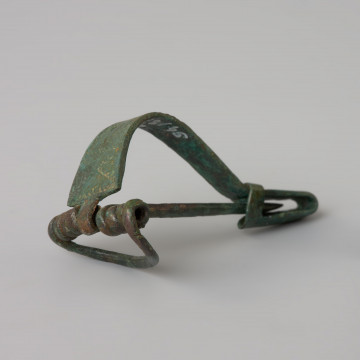
Tortoiseshell buckle
201 — 299
National Museum in Szczecin
Part of the collection: Antiquity
Fibulae are a very diverse group of ornaments. They are divided into many classes, depending on their design, decoration and type of metal that was used to make them. In each period, a different type of fibula was popular. The presented fibula belongs to the type with a bow curled up at the end, passing directly into the so-called foot, which serves as a pin catch. The construction elements indicate that the object comes from the 3rd century. The wide spring with many coils and a large chord passing under a slightly widened bow is quite remarkable. Visually, the brooch resembles a crossbow, which is why in the archaeology of the Roman period, the objects of this design are referred to as “crossbow” fibulae. The presented fibula was an element of one of the inhumation graves from Roman period, discovered in 1890 in the manor park in Redl. According to the scarce archival data, one of the discovered burials contained two skeletons. The other findings from that location that survived until today include two other bronze fibulae, including one crossbow fibula, a silver fibula, a bone comb, and amber, glass, and enamelled beads.
Bartłomiej Rogalski
Author / creator
Dimensions
cały obiekt: height: 2 cm, width: 5.5 cm
Object type
pin (fastener)
Technique
casting
Material
bronze
Creation / finding place
Owner
Muzeum Narodowe w Szczecinie
Identification number
Location / status

201 — 299
National Museum in Szczecin

National Museum in Szczecin

National Museum in Szczecin
DISCOVER this TOPIC
National Museum in Szczecin
DISCOVER this PATH
Educational path